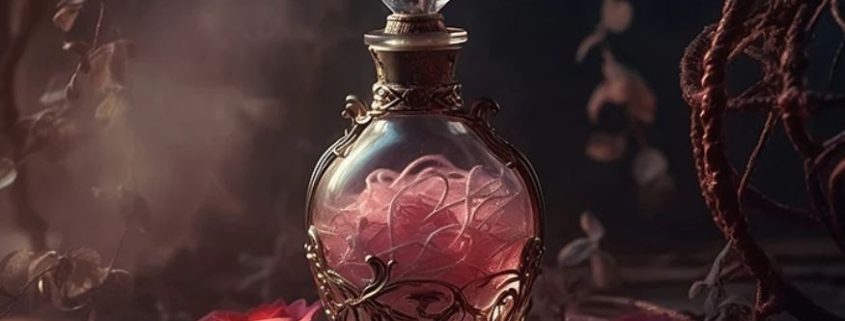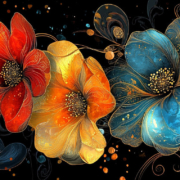The Aesthetics of the Art of Perfumery
The Art of Perfumery, the art of crafting and wearing scents, is a sensory experience that transcends the boundaries of visual artistry and resonates deeply with our emotions and memories. Just as a painter uses colors and brushstrokes to convey emotions, perfumers use a palette of aromatic notes to create compositions that speak to our senses. In this exploration of the art of perfumery, we delve into the intricate world of scent, from its historical significance to its contemporary allure.
-
A Fragrant Tapestry of History
-
The Olfactory Palette
-
From Concept to Composition
-
Bottled Emotions: The Personal and Cultural Significance
-
The Visual Element: Packaging and Presentation
-
Contemporary Trends: Natural Niche Perfumery and Artistic Expression
-
Conclusion
A Fragrant Tapestry of History
The roots of perfumery can be traced back to ancient civilizations such as Egypt, Mesopotamia, India, and Rome where fragrant materials were revered for their spiritual and medicinal properties. These early fragrances were often composed of natural substances like flowers, resins, and spices. Perfumes held cultural significance, symbolizing luxury, status, and spirituality.
In the art of perfumery, history is a rich source of inspiration. Natural Perfumers today draw upon ancient recipes and traditional techniques to create contemporary fragrances that pay homage to their roots. This fusion of old and new allows natural perfumery to evolve as an art form while preserving its historical essence.
The Olfactory Palette
Unlike other art forms that rely primarily on visual or auditory stimuli, perfumery engages the olfactory senses. The olfactory palette of a perfumer comprises three categories of aromatic notes: top, middle (or heart), and base notes. The interaction of these notes in a fragrance unfolds over time, creating a captivating sensory journey.
Top Notes: These are the initial impressions of a fragrance, often characterized by bright and fresh scents. Citrus fruits, herbs, and light florals are commonly found in top notes. They are ephemeral and set the stage for the unfolding narrative of the perfume.
Middle Notes: As the fragrance settles, the middle notes emerge, adding depth and complexity to the composition. These notes are often floral, fruity, or spicy, contributing to the heart of the scent. Middle notes establish the personality of the fragrance, giving it character and nuance.
Base Notes: The final phase of a perfume reveals its base notes, which are rich and long-lasting. Ingredients like woods, resins, and musks create the foundation of the fragrance, anchoring it in a lasting olfactory memory.
The blending of these notes is akin to a symphony, where each ingredient plays a vital role in creating a harmonious whole. The artistry lies in achieving a balance that is both pleasing and evocative, capturing the essence of the perfumer’s vision.
From Concept to Composition
The art of perfumery is not limited to the olfactory experience alone; it extends to the process of creating a fragrance. A perfumer’s journey begins with a concept or inspiration, which could be anything from a specific memory to a visual artwork. Translating this concept into a fragrant composition requires a deep understanding of both raw materials and the principles of olfaction.
Perfumers work with a diverse range of natural and synthetic materials to construct their fragrances. Each ingredient contributes its unique scent profile, volatility, and longevity. The juxtaposition of these materials involves intricate calculations and a profound knowledge of the chemistry behind scent interactions.
Much like a painter mixing colors on a palette, a perfumer blends aromatic materials in various proportions to create accords – harmonious combinations of notes that form the building blocks of a perfume. These accords are then carefully layered to craft the final fragrance, a process that involves both technical expertise and artistic intuition.
Bottled Emotions: The Personal and Cultural Significance

Sharif Photo courtesy Nathan Branch
Perfumes are more than just sensory experiences; they are vessels of memory and emotion. A single whiff of a familiar scent can transport us to a different time and place, evoking memories and emotions long forgotten. The aesthetics of perfumery tap into this emotive power, allowing us to communicate and connect with others on an intimate level.
Culturally, perfumes have held various meanings throughout history. They have been used in rituals, ceremonies, and social interactions. Perfumes can signify love, sensuality, power, or spirituality, depending on the context and cultural interpretations. The aesthetics of perfumery thus become a cultural language, expressing individual and collective identities.
The Visual Element: Packaging and Presentation
While perfumery primarily engages the olfactory senses, its aesthetics extend to the visual realm through packaging and presentation. The design of a perfume bottle and its packaging is a creative endeavor that complements the olfactory experience. The bottle becomes a vessel that holds the essence of the fragrance, and its design often reflects the character of the scent within.
Luxury brands often collaborate with renowned designers and artists to create visually striking bottles that are not just containers but pieces of art. The aesthetics of perfumery, in this context, blend seamlessly with the world of visual arts, forming a cohesive sensory experience that resonates with consumers.
Contemporary Trends: Natural Niche Perfumery and Artistic Expression
In recent years, a resurgence of interest in niche perfumery has led to a shift in the aesthetics of the industry. Natural niche perfumers focus on artistic expression and unique olfactory experiences, often challenging conventional scent norms. These fragrances are not mass-market products; they are works of art, created for individuals seeking personal and distinctive olfactory journeys.
Natural niche perfumery embraces unconventional ingredients, experimental compositions, and abstract concepts. Perfumers working in this space are akin to avant-garde artists, pushing the boundaries of scent to create olfactory art that captivates, challenges, and inspires.
Conclusion
The aesthetics of the art of perfumery encompass a sensory journey that goes beyond the visual realm. From historical roots to contemporary expressions, perfumery weaves a fragrant tapestry of emotions, memories, and cultural significance. The process of creating a fragrance, from concept to composition, mirrors the techniques of visual artists, blending technical mastery with artistic intuition.
Perfumery engages both the senses and the soul, allowing us to communicate, connect, and express our identities. Whether through the evocative power of a scent or the visual charm of a beautifully designed bottle, the art of perfumery enriches our lives with a multi-dimensional art form that resonates on a deeply personal level. As we continue to explore and celebrate the world of perfumery, we uncover the intricate threads that connect scent, memory, emotion, and culture.

























Leave a Reply
Want to join the discussion?Feel free to contribute!